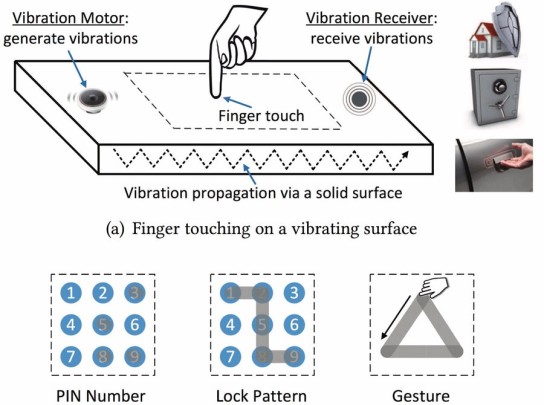VibWrite: Identification using vibrations in finger
on
Engineers from the Rutgers University in New Jersey have developed an identification system that detects the vibrations in a finger in order to verify users. This clever security system called VibWrite makes verification of users possible when the fingers touch a smooth surface. The inventors think that this system can be cheaper than identification using a fingerprint or iris scan.
Professor Jennifer Chen from the department of Electronics and Computer Technology explains the principle: “Everybody has unique fingers and exerts a different pressure with their finger tips on a surface. Sensors can detect these subtle physiological and behavioral differences and identify and authenticate a person”.
Vibration motor and piezo sensor
The system comprises a vibration motor that is attached to a smooth surface and produces vibrations. A piezoelectric sensor a small distance away senses vibrations and converts them into a measurable voltage. When a user places their finger between the motor and the sensor at will influences the propagation of the vibrations. Because everybody uses their fingers in a different way the sensor will always measure different and unique vibrations. “Sensors that can detect the subtle differences in physiology and behavior can identify a person this way”, according to Jennifer Chen from Rutgers University.

The engineers reported that the system can be used for doors with electronic locks, car doors and laptops. In brief, any device with a smooth surface. The VibWrite integrates different password techniques and behavior and physiologic characteristics, but relies mostly on the 'touch-sensing' of the vibration signals.
Through initial testing with using test subjects it turned out that in 95% of cases the correct person was detected. In 3% of cases it went wrong, which implies further research and testing.

The researchers are now working on a more advanced system that uses multiple sensor pairs, refine the hardware and to upgrade the authentication algorithms. Additionally, they also still need to test the system outdoors to take into account changing temperatures, humidity, wind, dirt and other environmental factors.
Take a look at the scientific paper for more information about the project.


Discussion (0 comments)